 Abraham Lincoln
If given the truth, the people can be depended upon to meet any national crisis...
Abraham Lincoln
If given the truth, the people can be depended upon to meet any national crisis...
 Guildford news...
for Guildford people, brought to you by Guildford reporters - Guildford's own news service
Guildford news...
for Guildford people, brought to you by Guildford reporters - Guildford's own news service
Birdwatcher’s Diary No. 28
Published on: 30 Jan, 2013
Updated on: 30 Jan, 2013
By Malcolm Fincham
On Tuesday, January 15, I heard reports of nine waxwings in the Guildford area, feeding on a ‘white berried rowan’ in someone’s front garden in Oakdene Road, Peasmarsh.
Although I only had my small ‘bridge’ camera with me at the time, I was glad I made the effort to go. The waxwings however were being constantly harassed (and eventually evicted) by two mistle thrushes that had decided they were not willing to share their spoils. So I was fortunate to take a few pictures before they departed.
Later that afternoon I decided to make the most of what was another rare sunny day and captured what I feel are my best pictures so far of our resident barn owl at Bowers Lock.
By the middle of January, and a little later than I had predicted, the creeping cold fingers of winter finally began to caress, and by the morning of Friday, January 18, snow was falling from the sky, making driving conditions quite a challenge, especially on many of the minor back roads of Surrey.
A very bleak and chilly walk under a snow-filled sky on the morning of Sunday, January 20, along the towpath from Stoke Lock to Burpham didn’t bring me much in the way of photo opportunities. And as my pictures show, I may just have well taken them in black and white! However, as always, it was great to be out and at one with nature.
Probably my best sighting was seeing more than 20 common snipe. They were flying low over a field along with several lapwing that had all been disturbed by a kestrel as it flew over them. The had been feeding in the field across the river as I looked out towards Burpham Court Farm.
Elsewhere on my travels in more rural areas and farmland south of Guildford, I noticed increasing amounts of redwing and fieldfare. They were feeding out in the fields and hedgerows in areas where the ground was still soft enough for them to find worms and invertebrates as the snow slowly started to thaw.
I was pleased with a picture I managed to get of a bright-eyed and very bushy tailed fox as it also hunted, hoping for the chance of an easy meal.
And I was also pleased to capture a picture of our smallest UK bird – the goldcrest. It is usually seen feeding in coniferous woodland areas, but this was one of many I’ve seen in the last few weeks flitting through the undergrowth in a more deciduous wooded area.
Many of these tiny critters are among the birds that make their way across the North Sea to winter in the UK along with their rarer close cousins, the firecrest. Unfortunately, and not for the want of trying, I have not be able to take an up-to-date picture of a firecrest, so I have included one I took a few years back. Note the large white stripe over its eye – not seen on the goldcrest.
There have also been several more reports of waxwing sightings locally, in particular in and around the Guildford area, with 20 reported feeding on apples in a garden in Albury and another seven spotted in Onslow Village.
Also Brian, on his daily patrol at Unstsead sewage farm, had the fortune of spotting a bittern on January 19 – a first ‘on the deck’ for him at that location. Despite on-going breeding conservation work in reed beds in East Anglia, the bittern, a bird of the heron family, still remains on the RSPB’s ‘red list’. And along with it being a very elusive bird, it remains a rare sighting in the Surrey area.
Last but not least, and to put a positive spin on the cold weather, it has been great for those with bird feeders to watch and even to get a few close-up pictures of the large variety and sometimes unusual feathered friends arriving in our gardens.
One such picture e-mailed to to me of a curious looking bird was by a fellow enthusiast, who was puzzled by what it might be. Sometimes such pictures can be tricky to guess and I then have to consult a far more knowledgeable birdwatcher and reader of my reports. However, on this occasion my instant recognition of shape, size of beak and stance, etc, shouted out to me ‘Chaffinch..! ‘
As seen in the photo above, it does look most unusual. The washed-out colour is due to it being ‘leucistic ‘ – having a quite rare genetic lack of pigment which can occur not just in birds but in mammals and reptiles too.
And finally, and with much hope of being wrong and not to be burned at the stake if my predictions are correct, I strongly feel that it’s not time to put one’s overcoat and thermals away just yet. There’s a good chance that in the next few weeks winter could well be back with a sting in its tail… So never mind ‘the Ides of March’, watch out for the ice of February!
Responses to Birdwatcher’s Diary No. 28
Leave a Comment Cancel reply
Please see our comments policy. All comments are moderated and may take time to appear. Full names, or at least initial and surname, must be given.Recent Articles
- Thames Water Faces £122 Million Penalty Following Ofwat Inquiry
- New Knife Crime Strategy for Surrey Announced
- Public Asked for Views on SCC’s Proposal for Reduced Speed Limits
- Guildford Healthcare Staff Celebrated for Transformative Mental Health Support
- Will the Government Help Save Community Pubs? Asks Surrey MP
- A Lighthouse in the Centre of Town Showing the Way to Community
- Letter: SCC Directs Weedkilling Policy
- Library Gets Lottery Grant To Raise Awareness of Green Issues
- Story of Wartime Canadian Army Entertainment Unit Based at Down Place, Guildford
- Flashback: Around the Very Top: Slow Progress to Our First Remote Stop


Recent Comments
- J Holt on Millions of Taxpayer Money Recovered from Railway Fare Dodgers
- J Holt on Summary of GBC Planning Decisions – May 21, 2025
- Kit Collins on Letter: Is This the Ugliest Building in Guildford?
- Barbara Ford on Notice: Have a Blooming Picnic – June 7
- M Durant on Millions of Taxpayer Money Recovered from Railway Fare Dodgers
- Jim Allen on Letter: If GBC Wishes To Be Nature-friendly, Stop Spraying Weedkiller
Search in Site
Media Gallery
Dragon Interview: Local Artist Leaves Her Mark At One of England’s Most Historic Buildings
January 21, 2023 / No Comment / Read MoreDragon Interview: Lib Dem Planning Chair: ‘Current Policy Doesn’t Work for Local People’
January 19, 2023 / No Comment / Read MoreA3 Tunnel in Guildford ‘Necessary’ for New Homes, Says Guildford’s MP
January 10, 2023 / No Comment / Read More‘Madness’ for London Road Scheme to Go Ahead Against ‘Huge Opposition’, Says SCC Leader
January 6, 2023 / No Comment / Read MoreCouncillor’s Son Starts Campaign for More Consultation on North Street Plan
December 30, 2022 / No Comment / Read MoreCounty Council Climbs Down Over London Road Works – Further ‘Engagement’ Period Announced
December 14, 2022 / No Comment / Read MoreDragon Interview: GBC Reaction to the Government’s Expected Decision to Relax Housing Targets
December 7, 2022 / No Comment / Read MoreHow Can Our Town Centre Businesses Recover? Watch the Shop Front Debate
May 18, 2020 / No Comment / Read More





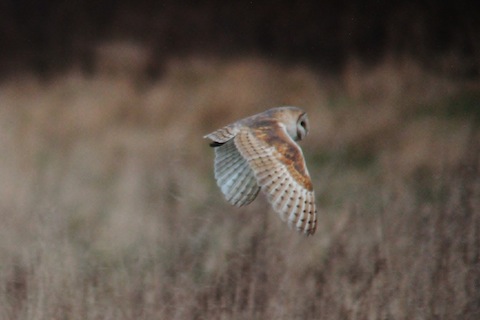




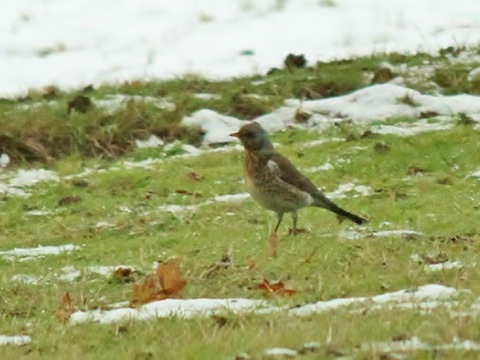
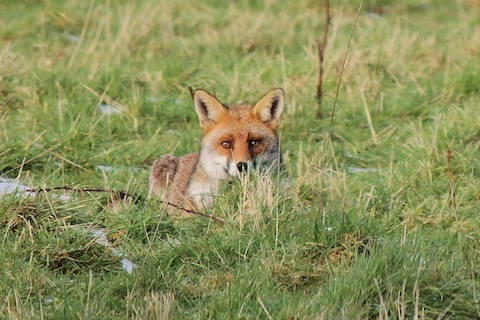




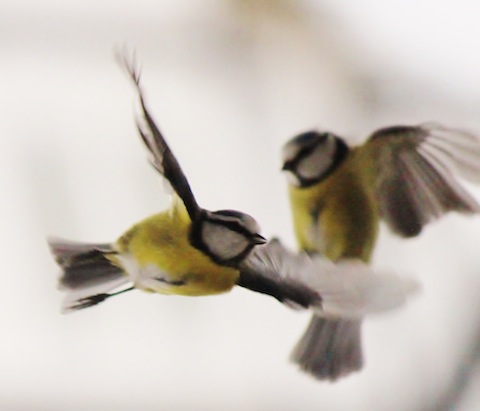
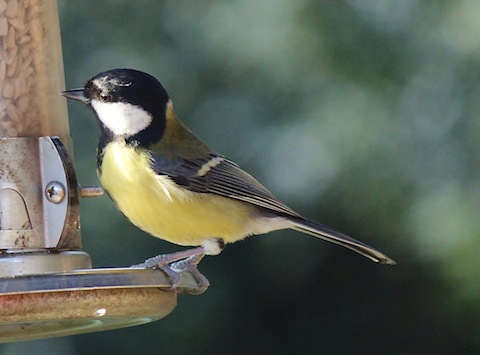

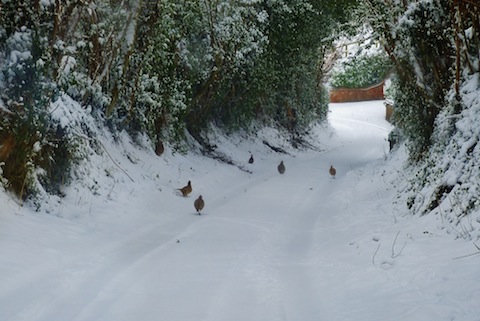









David Rose
January 30, 2013 at 12:31 am
Thanks once again for a great report. Amazing to see such a wide range of birds in the Guildford area.
Forgot to say to you during our phone chat earlier, on two occasions recently while driving through Haslemere I have seen a carrion crow with bold splashes of white on its wings.
Both times it was strutting about on the pavement without a care in the world!
What’s the condition of that bird I wonder?
Before anyone gets excited, it is not a hooded crow – a rare bird that I think I’m right in saying is rarely seen in these parts, if ever.
However, while on a visit to Copenhagen a few years ago I was surprised to see hooded crows there at close range in the city centre parks. They are quite easily identified by their grey markings.
Steve Balchin
January 30, 2013 at 9:24 pm
Another interesting report and what a great selection of birds, I particularly like the latest picture of the barn owl.
David Rose
January 30, 2013 at 10:12 pm
Wednesday, January 30, 1pm: spotted 11 waxwings in a tree in the front garden of a house in Aldershot Road, opposite Woodbridge Hill Club.
Malcolm Fincham
January 30, 2013 at 11:27 pm
Hi Dave and Steve,
Thank you both for the complimentary remarks.. The question posed by Dave almost certainly sounds to me to be a case of leucism as with the chaffinch shown in the above report of which I hoped to get away without explaining in too much depth.
It’s a common case that leusistic birds more often have a lot of white [unlike the one pictured in my report] and are sometimes [wrongly] called part albino.
As with all things genetic, this can often miss out several generations then reappear in varying amounts. Will email you a pic of a chaffinch I took last year which shows the variation of leucism compared to the one in my report. Maybe I can add it to the above report, if not I hope to add it to the next one.
Malcolm Fincham
January 30, 2013 at 11:48 pm
Hi Dave
Thanks ever-so much for the ‘tip-off on the waxwings …Well spotted..!
Managed to get down there at 3pm and grabbed a couple of ‘record shots’ to add to my next report just before they flew north in the direction of Stoughton recreation ground.
kind regards
Malc
Malcolm Fincham
January 31, 2013 at 12:00 am
Hi Dave
Thank-you for your tip-off on the waxwings
Well spotted..!!
Managed to get down there and grab a couple of ‘record shots’ at 3pm just before they flew north in the direction of Stoughton rec
Simon Fear
March 27, 2013 at 11:02 pm
I met Malcolm on one of his outings.
He has managed to get some fantastic shot of the local area and wildlife. Following his work is a real pleasure.
I have never seen a fire crest before and would like to thank Malcolm for such a clear photo.
I hope he keeps up the good work and I hope I meet him again.